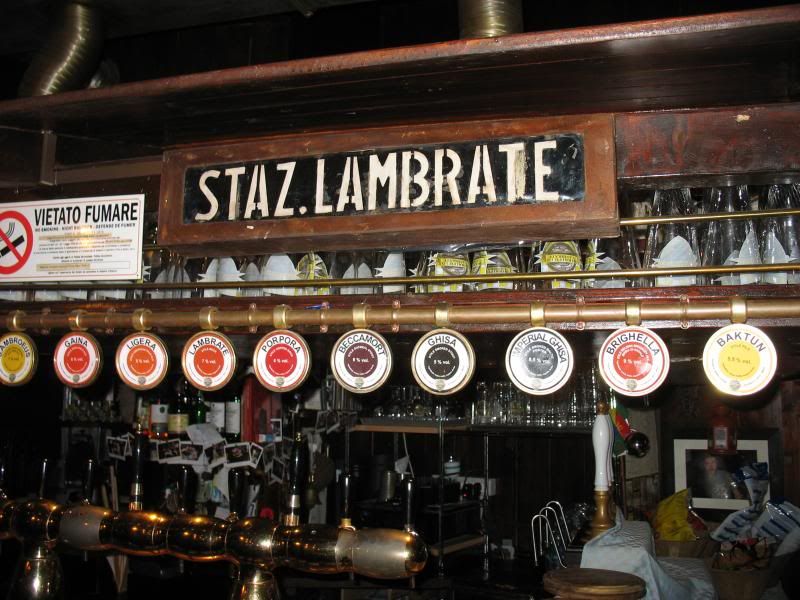Bruno, the owner and brewer for Toccalmatto,
received his undergrad in agricultural sciences then returned for his masters
in economics. He was a manager of logistics for a few large corporations, one
being Carlsberg for 7 years where they brewed 1.6 million hl.
The experience of being a manager
of operations, purchasing, logistics and planning connected him to hop and malt suppliers.
Today he buys specialty malts and hops and resells them to other breweries. Brewers, like Giovanni Campari from Del Ducato, share the costs while allowing him to utilize a warehouse
just 500 meters from his tiny brewery.
For Bruno it all began when he
was working in England. “I had the chance to taste some really, really
interesting styles—the real ales.” He found that there were many beers he could
not get in Italy.
“The English beers I found in
Italy were shit, really terrible. Without any sense, without taste.”
In the early 1990s Bruno began to
brew at home getting his equipment and hops from the United States.
“The first Italian brewer I knew
was Agostino (Birrificio Italiano). I was definitely influenced by him. My preferred
beer at that time was Tipopils. For me Tipopils is a masterpiece.”
But Bruno was perhaps the first Italian brewer
to accentuate hops rather than the spices or nuts as is the case for many
Italian beers. He sees his beer as being more American in style using more hops than the typical Italian brewery.
A perfect example of this is found in his B Space Invaders Black IPA. Like a Black IPA should, the bitterness comes from the hops, not from the malt. It has a lovely, velvety mouthfeel with chocolate notes and a slight touch of roast. The label shows a battle between the hops, on the left, and the dark malts represented by various monsters on the right. He used Galaxy hops to round out the space theme.
Italian beer drinkers responded slowly to the hoppy beers he was producing, selling practically
nothing in his province of Parma in the Emilia-Romagna region. But in Rome, where
consumers love IPAs, Toccalmatto is very strong.
Bruno carved his niche by selling
his beers only to the best pubs and beer shops in Italy and a few to restaurants
whose owners like beer.
“I don’t want to sell my beers to
normal pizzerias or kebab shops. I decided to be very specialized, very
specific, because a double IPA is very difficult to pair with Italian food. Our
goal at Toccalmatto from the beginning was to only produce special beers, only
beers with character. In Italy there is a lot of creativity but not as much technical skill. The Italian side of me seeks inspiration and creativity. And
obviously the Toccalmatto motto is to be open and innovative. I don’t want to
copy other beers. I’ll be inspired but not copy.”












